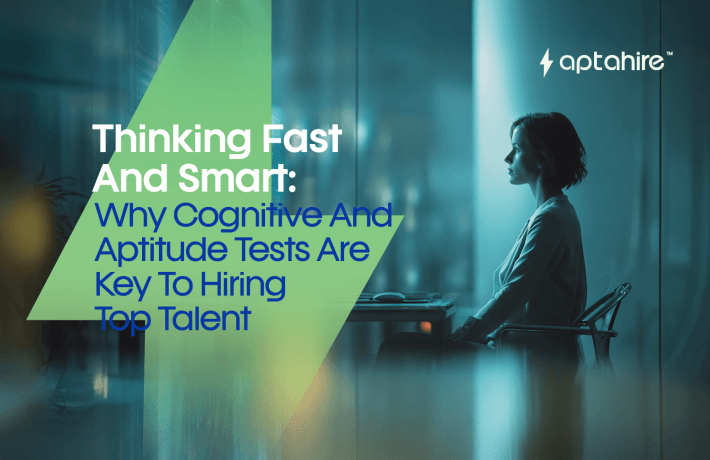AI vs. ATS: What’s Best for Small Businesses?

Hiring for a small business is like finding the perfect puzzle piece in a pile of lookalikes. You don’t have the luxury of a big HR department, your time is tight, and every hire counts. So when you’re told you need to “automate your recruitment process,” two buzzwords pop up fast: ATS (Applicant Tracking System) and AI-powered hiring tools.
But which one is better for your small business? Do you even need either? Or both? Let’s break it all down in a simple, honest way, no tech jargon, no marketing fluff, just what works for small teams trying to hire smarter.
First, What is an ATS?
An Applicant Tracking System (ATS) is like a digital filing cabinet for your hiring process. It helps you collect resumes, organize candidates, track who applied when, and manage interviews.
Think of it as the digital version of an HR assistant who doesn’t take coffee breaks.
Here’s what an ATS typically does:
- Stores and organizes resumes
- Automatically filters applications based on keywords
- Tracks candidate stages (applied, screened, interviewed, etc.)
- Helps schedule interviews and send emails
- Maintains compliance and documentation
Popular ATS examples:
- Zoho Recruit
- Workable
- BreezyHR
- Freshteam
Okay, So What About AI Hiring Tools?
AI in hiring goes beyond organizing applications, it actually analyzes them. AI tools help you screen, assess, and even interview candidates using advanced algorithms.
Instead of just tracking applications, AI actively helps you make better decisions.
AI tools can:
- Screen resumes based on skills, experience, and context
- Evaluate video interviews using behavioral cues
- Score candidates on personality, culture fit, or role alignment
- Flag potential red flags (like inconsistent experience)
- Predict candidate success based on data
Examples of AI hiring tools:
- AptaHire (great for small teams)
- HireVue
- Pymetrics
- Harver
So… ATS vs. AI: What’s the Difference?
| Feature | ATS | AI Hiring Tool |
| Main Job | Tracks and manages applicants | Screens, evaluates, and predicts performance |
| Complexity | Basic automation | Smart, data-driven decisions |
| Ideal for | Organizing and structuring hiring | Improving quality of hires |
| Screening Ability | Keyword-based | Context + behavior-based |
| Cost | Usually cheaper or freemium | Often more advanced pricing |
Why AI Might Be a Game-Changer for Small Businesses
Here’s the thing: AI levels the playing field.
Big companies have the money and manpower to filter through hundreds of resumes, conduct hours of interviews, and build talent pipelines. You don’t. But with AI, you can get insights that usually only big HR teams could offer.
Imagine this:
- You post a job
- 120 people apply
- Your AI tool scans all applications overnight
- It tells you the top 10 candidates who are not just qualified but culturally aligned
- You spend your time only on the best matches
Boom. That’s what smart hiring looks like.
When is ATS Better Than AI?
If you’re hiring occasionally and mostly want to stay organized, an ATS is a great starting point. It’s simple, affordable, and takes a lot of logistical weight off your shoulders.
Use an ATS if:
- You’re only hiring once every few months
- You just need to track who’s applied and what stage they’re in
- You want a digital tool to stay structured but don’t need deep analysis
- You’re not ready to invest in more advanced AI features yet
When is AI Better Than ATS?
AI shines when you’re struggling with quality over quantity. It doesn’t just manage resumes; it helps you pick the right people faster.
Use AI if:
- You get too many unqualified applicants and need better screening
- You want to hire based on behavior, skills, and personality, not just a resume
- You’re scaling fast and need to make multiple quality hires quickly
- You care about reducing bias and improving diversity
AI-powered hiring isn’t about replacing you. It’s about supercharging your judgment with the right data.
Pro Tip: You Don’t Have to Choose Just One
Here’s a secret most people won’t tell you: You can use both.
Start with a free or low-cost ATS to stay organized. Then plug in an AI layer on top, like an AI interview tool, resume screener, or culture-fit analyzer.
You’ll get the best of both worlds:
- Clean candidate tracking
- Smarter shortlisting
- Better hiring decisions
For example, AptaHire offers AI hiring plus ATS features, making it a great all-in-one option for startups and SMBs.
Real-Life Example: Meet Kavita, a Small Business Owner
Kavita runs a digital marketing agency with a 10-person team. She used to post jobs on LinkedIn, sort resumes manually, and schedule interviews over email. It worked—until it didn’t.
Once she started hiring frequently, the inbox chaos began. She missed great candidates, ghosted a few accidentally, and wasted hours in interviews that went nowhere.
What she did:
- Started using a free ATS (Freshteam) to track applicants
- Added an AI-based screening tool to filter resumes
- Introduced video interview scoring for culture fit
Now she spends less time hiring, and hires better people. Her team is happier. Her process is smoother. And she feels like a pro (without needing to hire an HR person).
What About Cost?
Good question. Here’s a rough idea:
| Tool Type | Cost (Monthly) | Worth It For? |
| Basic ATS | Free to ₹2,000 | Light hiring needs, staying organized |
| Advanced ATS | ₹3,000–₹8,000 | Regular hiring, growing teams |
| AI Screening Tools | ₹5,000+ | Quality shortlisting, time savings |
| All-in-One Tools | ₹7,000–₹15,000 | Startups hiring frequently |
Many tools offer free trials, try before you buy!
Final Verdict: What’s Best for Your Business?
It all boils down to this:
- If you need order and structure, go with an ATS.
- If you need accuracy, speed, and smarter hiring, AI is your friend.
- If you want to hire like a pro, combine both and automate what drains your time.
At the end of the day, what matters is not the tool, it’s how you use it to hire people who’ll help your business grow.
TL;DR
- ATS = applicant tracker, good for organizing
- AI = smart hiring, great for quality and speed
- Use ATS if you hire occasionally
- Use AI if you’re scaling or want better decisions
- Combine both for best results
Ready to make your first smart hire?
FAQs
1. Which ATS is best for small business expansion?
Freshteam, Zoho Recruit, and BreezyHR are popular and affordable ATS options for growing small businesses. They offer simple interfaces, scalability, and features like email templates, candidate tracking, and interview scheduling, perfect for lean teams.
2. Does ATS use AI?
Some modern ATS platforms now integrate basic AI features, like keyword filtering, resume parsing, or candidate ranking. However, traditional ATS tools don’t have deep AI capabilities like behavior analysis or predictive hiring. For smarter insights, pairing an ATS with AI screening tools is ideal.
3. What is the success rate of ATS?
Success varies by company and usage, but studies show 75% of resumes are rejected automatically by ATS due to keyword mismatches or formatting. For employers, ATS can save 30-40% of time in the initial screening process and improve hiring efficiency significantly.
4. Do big companies use ATS?
Yes, almost all large enterprises use ATS systems to manage high volumes of applicants efficiently. Companies like Google, Amazon, and Unilever rely on ATS tools to stay compliant, structured, and fast in their recruitment.
5. Do startups use ATS?
More and more startups are adopting lightweight or freemium ATS tools to organize their hiring. It helps them avoid spreadsheet chaos, streamline communication, and make smarter, faster hiring decisions even with small teams.
6. How much does an ATS cost?
Prices range based on features and company size:
- Free or freemium plans: Great for basic needs
- ₹1,500–₹4,000/month: For small businesses scaling gradually
- ₹5,000–₹15,000/month: For growing teams with high-volume hiring
Many providers offer free trials or pay-as-you-go models, making it flexible for SMBs.



